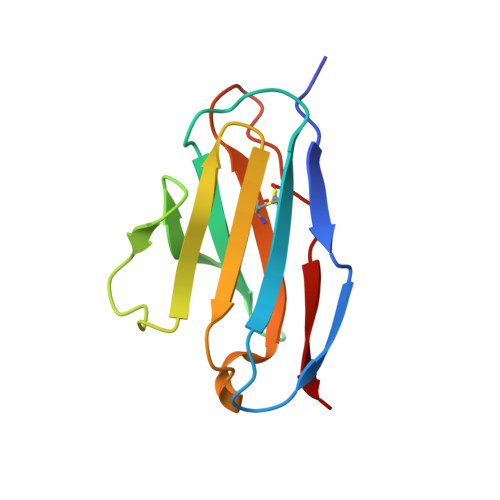Altered dimer interface decreases stability in an amyloidogenic protein.
Baden, E.M., Owen, B.A., Peterson, F.C., Volkman, B.F., Ramirez-Alvarado, M., Thompson, J.R.(2008) J Biol Chem 283: 15853-15860
- PubMed: 18400753
- DOI: https://doi.org/10.1074/jbc.M705347200
- Primary Citation of Related Structures:
2Q1E, 2Q20 - PubMed Abstract:
Amyloidoses are devastating and currently incurable diseases in which the process of amyloid formation causes fatal cellular and organ damage. The molecular mechanisms underlying amyloidoses are not well known. In this study, we address the structural basis of immunoglobulin light chain amyloidosis, which results from deposition of light chains produced by clonal plasma cells. We compare light chain amyloidosis protein AL-09 to its wild-type counterpart, the kappaI O18/O8 light chain germline. Crystallographic studies indicate that both proteins form dimers. However, AL-09 has an altered dimer interface that is rotated 90 degrees from the kappaI O18/O8 dimer interface. The three non-conservative mutations in AL-09 are located within the dimer interface, consistent with their role in the decreased stability of this amyloidogenic protein. Moreover, AL-09 forms amyloid fibrils more quickly than kappaI O18/O8 in vitro. These results support the notion that the increased stability of the monomer and delayed fibril formation, together with a properly formed dimer, may be protective against amyloidogenesis. This could open a new direction into rational drug design for amyloidogenic proteins.
Organizational Affiliation:
Department of Biochemistry and Molecular Biology, College of Medicine, Mayo Clinic, Rochester, Minnesota 55905, USA.














